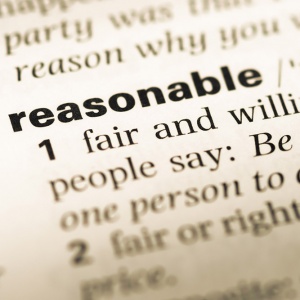Reasonable force - when may it be used?

All school staff hope that they won’t have to use reasonable force, but as they have a duty of care towards their pupils, some situations may leave them with little choice. It is important to understand the circumstances when reasonable force may be used, and when it is not acceptable.
Most staff in schools will, at some point in their career, have had cause to use a degree of physical contact with students. This can range from simply leading a student to safety by the arm, to the other extreme, where a fight needs to be broken up or a student needs to be restrained to prevent violence or injury to themselves or others.
When can reasonable force be used?
Reasonable force in any circumstances should be used as a very last resort.
Schools usually employ a wide range of strategies to promote good behaviour and, in the event of these not having the desired effect, techniques to de-escalate situations, which should prevent the need to use force from ever occurring. Many schools refer to extreme situations requiring reasonable force as ‘positive handling’. Some schools acknowledge that all staff have the power of reasonable force should the need arise. Yet others limit those who can use ‘positive handling’ or ‘reasonable force’ to members of the senior leadership
Situations where reasonable force may and may not be used
You may:
- Remove disruptive children or young people from the classroom where they have refused to follow an instruction to do so
- Prevent a student behaving in a way that disrupts a school event, trip or visit
- Prevent a pupil from leaving a classroom, where allowing them to leave would risk their safety or lead to behaviour that disrupts the behaviour of others
- Prevent a pupil from attacking a member of staff or another pupil
- Stop a fight or restrain a pupil at risk of harming themselves through physical outbursts.
You may not:
- Use force as a punishment because it would fall under the definition of corporate punishment which is illegal.
Power to search without consent
In addition to the general power to use reasonable force, headteachers and authorised staff can use such force as is reasonable given the circumstances to conduct a search without consent for the following prohibited items.
- knives and weapons
- alcohol
- illegal drugs
- stolen items
- tobacco and cigarette papers
- fireworks
- pornographic images
- any article that has been or is likely to be used to commit an offence, cause personal injury or damage to property
Force cannot be used to search for items banned under the school rules; for example, if your school has a ‘no chewing gum’ rule, you cannot use force to search for it.
Use of Reasonable Force in Schools
As the UK’s leading provider of Safeguarding and Duty of Care training courses, we have produced a new training course called ‘Use of Reasonable Force in Schools’ which is designed to take you through the DfE advice on restraint. This new course is available to buy online individually or as part of our EduCare for Education® training package.
The course covers:
- what is
reasonable force and who can use it - when reasonable force can be used
- what happens in situations when reasonable force has been used.
